Seppo guide
On this page
Scoring
1. Configuring scoring settings
In the Game Settings > Advanced > Scoring, you can configure several scoring related features for players. The available options are:
- Play without points – Players do not earn points from tasks. Instead, specific answer options are marked as correct.
- Hide scoreboard – The scoreboard is hidden from players, reducing the sense of competition.
- Badges – Players can earn badges based on their performance in tasks.
2. Playing a game without points
When points are removed from the game, players receive automatic and written feedback from the instructor instead. This changes certain aspects of the game:
- For the instructor: In multiple-choice and checkbox tasks, the instructor marks specific answers as correct instead of assigning point values.
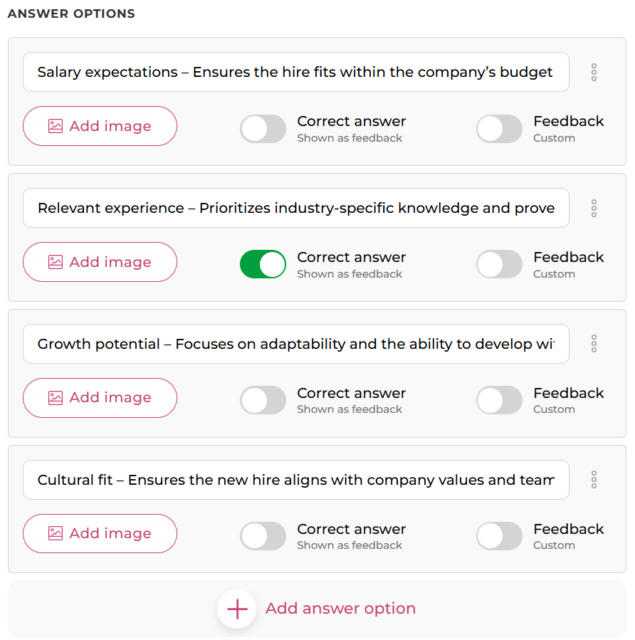
- For the player: Progression and performance are no longer measured by points. As a result, the evaluation screen changes, and the scoreboard is hidden.
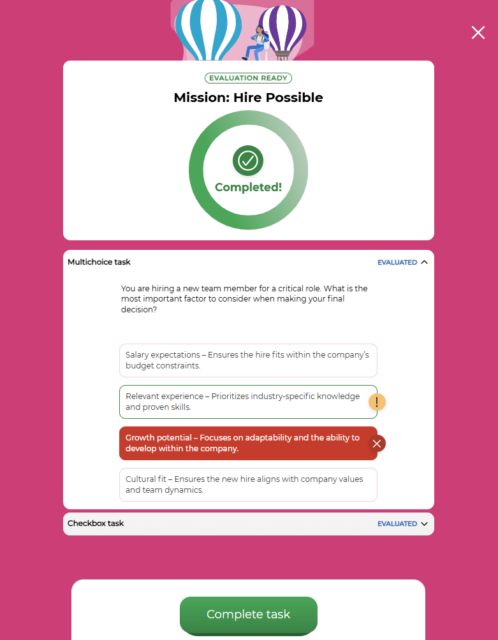
3. Hide scoreboard
Enabling this setting hides the scoreboard from players while still keeping track of points in the game. This is useful when player performance should remain private. However, the instructor can still view the scoreboard in the Play tab, located at the bottom left of the game editor.
4. Badges
Badges are special rewards that players can earn from tasks based on their performance. They are added to a game through the badge manager, which can be accessed in Game settings.
How to Add Badges to a Game:
Enable badges in Game settings.
Click the "Open badge manager" button that appears below the toggle.
Click "Save and continue" to save your current game settings and proceed to the badge manager.
In the badge manager, click "Add a new badge".
Give your badge a name and select a badge image. You can also upload a custom image.
Save your changes.
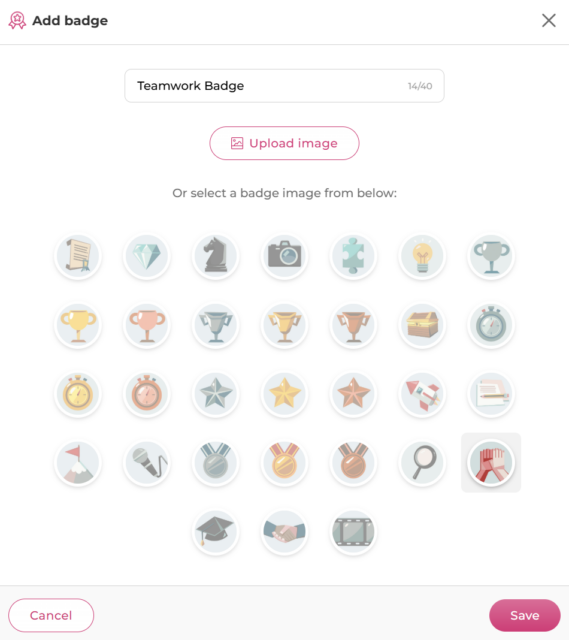
How to use badges?
Once badges have been added to a game via the badge manager, they can be awarded based on player performance.
There are three ways to award badges:
Automatically – A badge is granted when a player completes a task and reaches a set point threshold.
During task evaluation – Instructors can award badges when reviewing a player's response to a creative task.
Directly to a player – Badges can be given manually, independent of any specific task performance.
Awarding badge automatically
Open a task in edit mode.
Navigate to Advanced task settings.
Enable “Automatically award badge” feature.
Select a badge and determine a points threshold for achieving it.
Save your changes.

Awarding a badge during evaluation
Open an answer to a creative task from the panel on the left of the screen in the Play tab.
Select a badge to award with your feedback.
Click the “Evaluate” button.
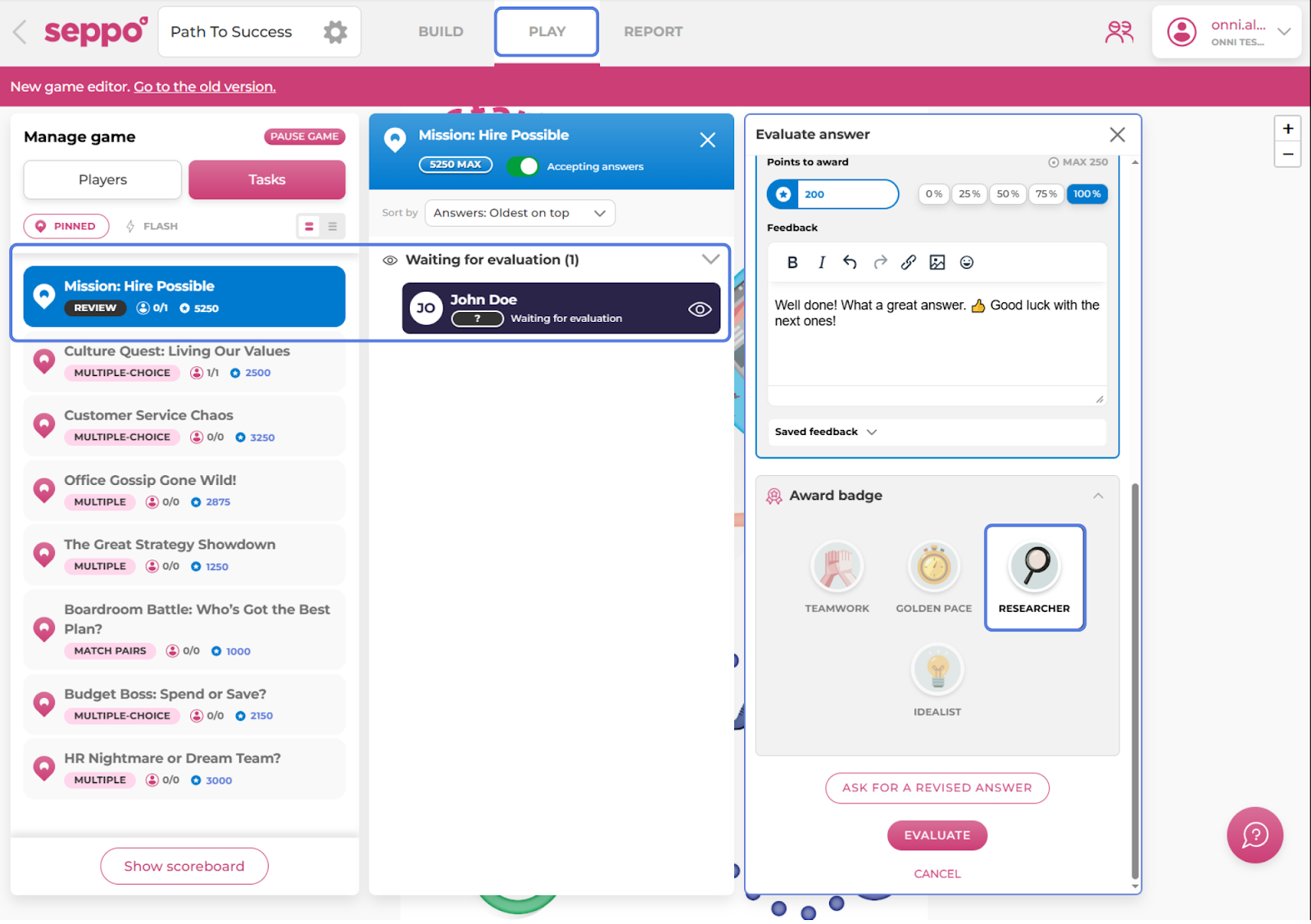
Awarding a badge directly to a player
Navigate to the Play tab > Players tab section.
Select a player from the player list.
Click the “Award badge” button.
Select a badge and click “Award”.
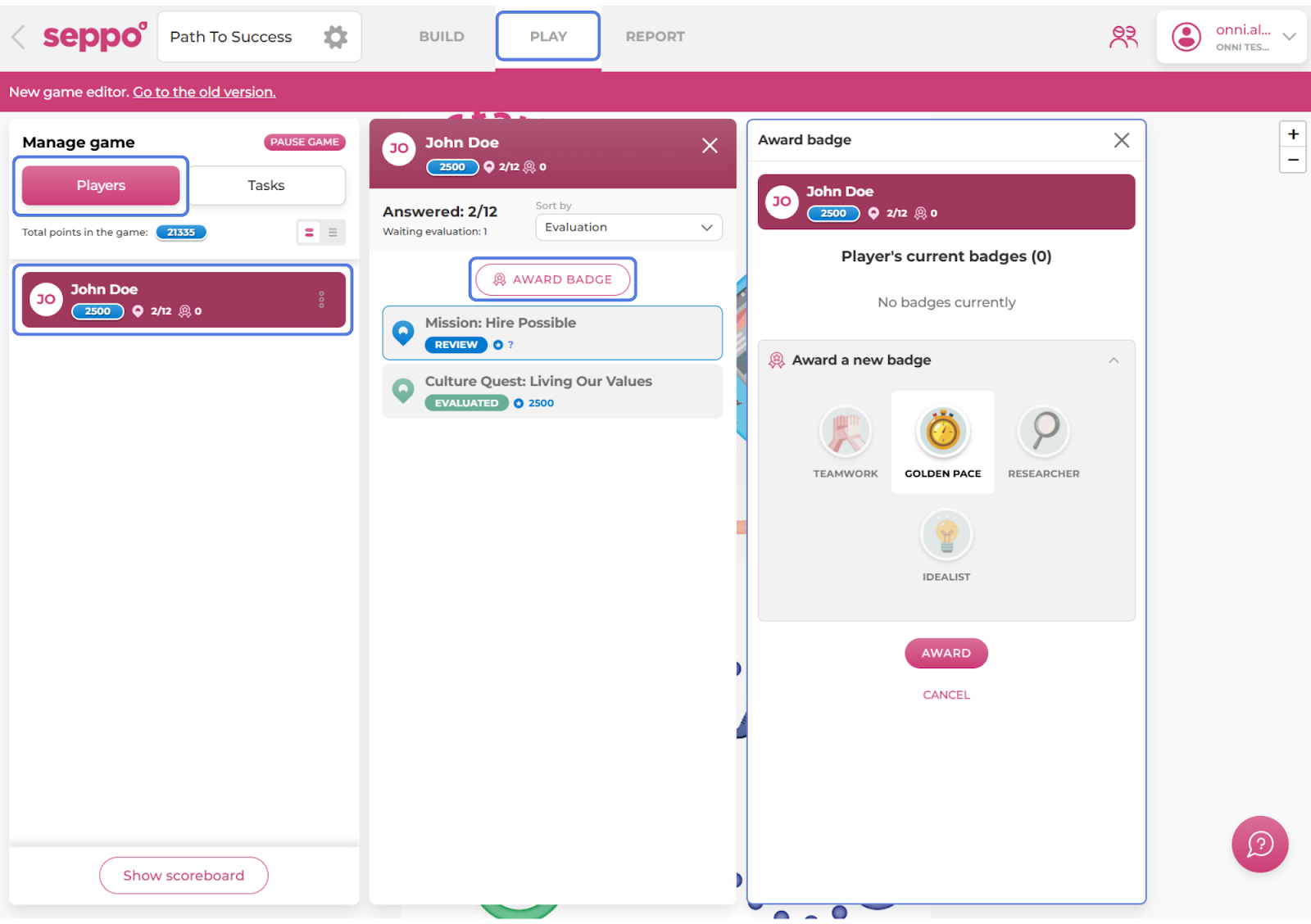

Best practices and tips
Badges are a great way to add extra rewards to the game beyond points. They can also enhance the game’s story and create a sense of mystery. For example, collecting all the badges could reveal a secret combination to unlock a special task.